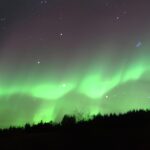Iceland’s strangest food possibly isn’t any stranger than other countries’ food. But it’s still strange!
Some are generally only eaten during mid-winter and especially during the mid-winter festival þorrablót, but others are eaten all year round. Some are eaten by many, while others are maybe more an enquired taste.
Being strange doesn’t mean it tastes bad; it’s just different from what people are used to.
Hákarl – Fermented Shark
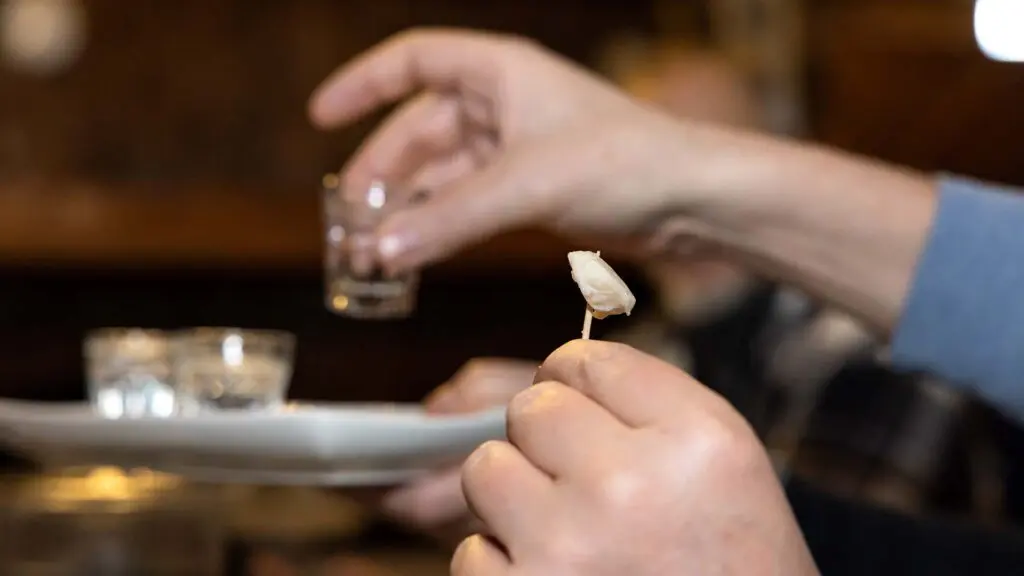
Of course, the fermented shark is on the list. No list of strange Icelandic food would be complete without this food item.
The shark in question is a Greenland shark cured with a particular fermentation process and hung to dry for four to five months. It has a strong ammonia smell and a fishy taste.
There’s a good reason for that ammonia smell – sharks don’t pee. So, when hunted, it is poisonous to eat. To be able to eat it, the shark has to be buried for 6-12 weeks, depending on the season, to ferment it. Then it is cut into strips and hung for four to five months because it is still unsafe to eat. It makes us wonder how many people got sick before realizing they had to ferment the shark for months before it was safe to eat.
This is a super-acquired taste. It is traditionally eaten with a shot of Brennivín. It should be noted the smell is much worse than the taste, and many do consider the shark to be a delicacy.
You can taste this in Café Loki, The Sea Baron, The Icelandic Bar, and many other places. You will get a taste of shark on our Reykjavik Food Lovers Tour.
Lundi – Puffin
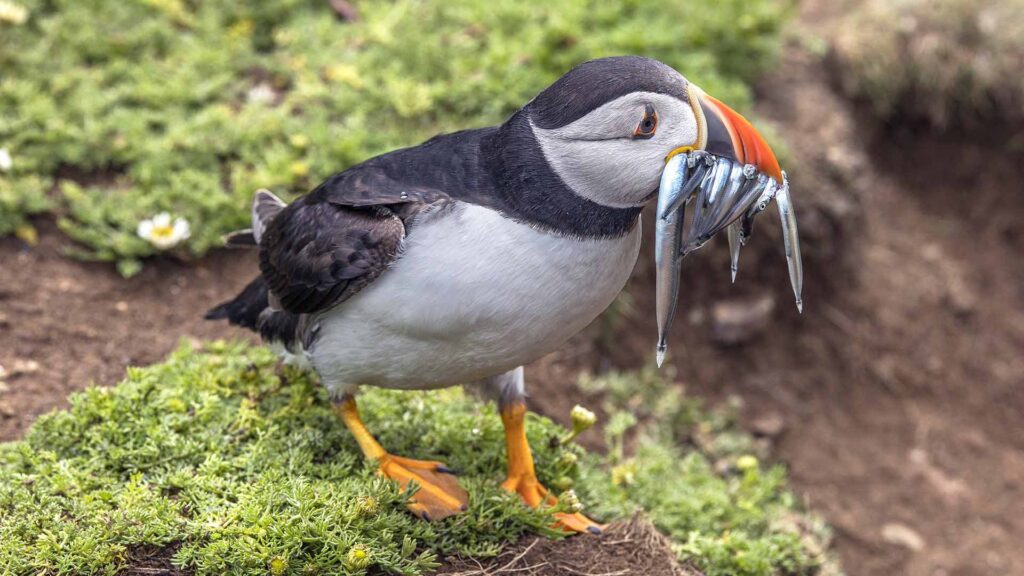
Yeah, we eat puffin. It’s not something people will eat every day, but it is popular around Christmas and as Christmas dinner. Puffins are caught with pocket nets, a method from the Faroe Islands. The net has a long stick that splits into two V-shaped pikes at the end, where the net is strung. People wait until many birds fly up simultaneously and glide in a circle over the cliffs. Then they are caught one after the other by grabbing them with the net from below.
Puffin hunting is mainly practiced in the Westman Islands and Grímsey. However, due to the population size becoming smaller, hunting has also gone down.
Puffin is not standard on restaurant menus. You are most likely to find it in some finer restaurants like Grillmarkaðurinn late in the year. It is also sometimes on offer at 3 Frakkar on Baldursgata.
Súrir hrútspungar – Cured Ram’s Testicles
This might possibly be Iceland’s strangest food. Not that Iceland is the only country to utilize everything off the sheep. Mongolia, Canada, Iran, and more countries do so too. However, none (as far as we know) eat ram’s testicles cured in lactic acid.
Sour ram testicles. It is precisely what the name would suggest. The ram’s testicles are removed, washed, boiled, pressed into molds, and cured with lactic acid. Then you slice them like a loaf of bread.
They are a bit like marmite; either you like them or don’t. Many do not dare to taste them.
Sour ram testicles are generally only available from January to March, in connection with the mid-Winter festival þorrablót. Then you will find them readily available in most supermarkets. Restaurants don’t always serve this unless they hold þorrablót.
Svið – Singed sheep’s head
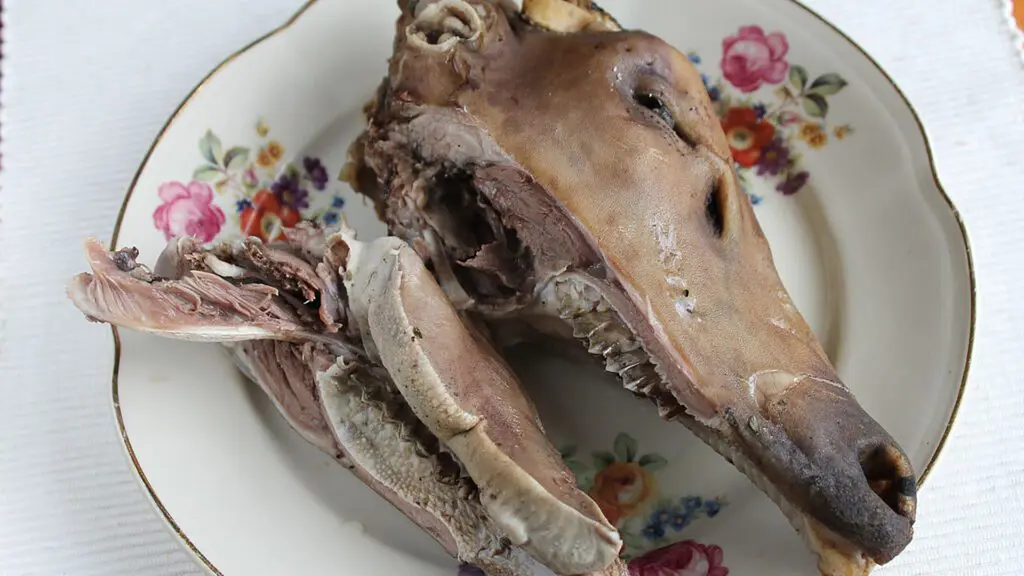
This is another speciality of Iceland and definitely one of Iceland’s strangest food. Singed sheep’s head. When buying it, you will get boiled half a head of lamb, eye and tongue included.
Svið (literally “singed) consists of a sheep’s head, cut in half, singed to remove the fur, and then boiled with the brain removed. Sometimes it is cured in lactic acid.
Svið hails from a time when people used everything from sheep. Initially, it was just a part of Icelander’s diet, but these days, it is mainly eaten during Þorri and especially at Þorrablót. Many consider the eye to be the best part of the head.
Some people also eat sviðasulta, where bits of svið are put in gelatinous loaves and pickled in whey.
Harðfiskur – Drief Fish or Fish Jerky
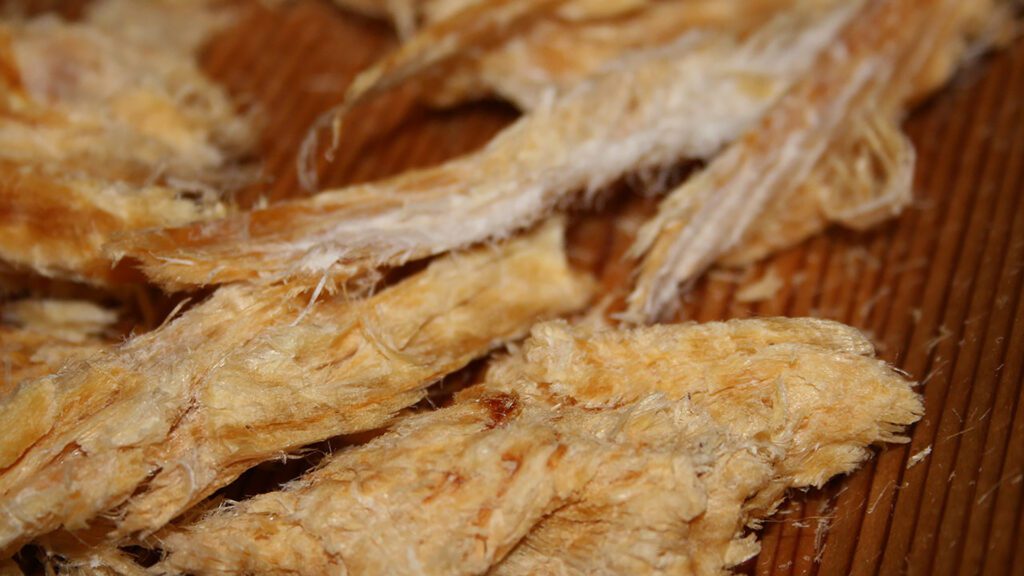
Icelanders don’t find this very weird, but maybe it is. It is delicious, though, and a great source of protein. Harðfiskur is a dried and beaten fish usually worked from haddock, catfish, or cod. Sometimes coalfish, blue whiting, and halibut are used as well. For a long time, harðfiskur was the food Icelanders ate the most, usually with butter or dulse.
You can get harðfiskur in almost every store and gas station around the country, all year round. It is also great road trip food!
Plokkfiskur – Fish Stew
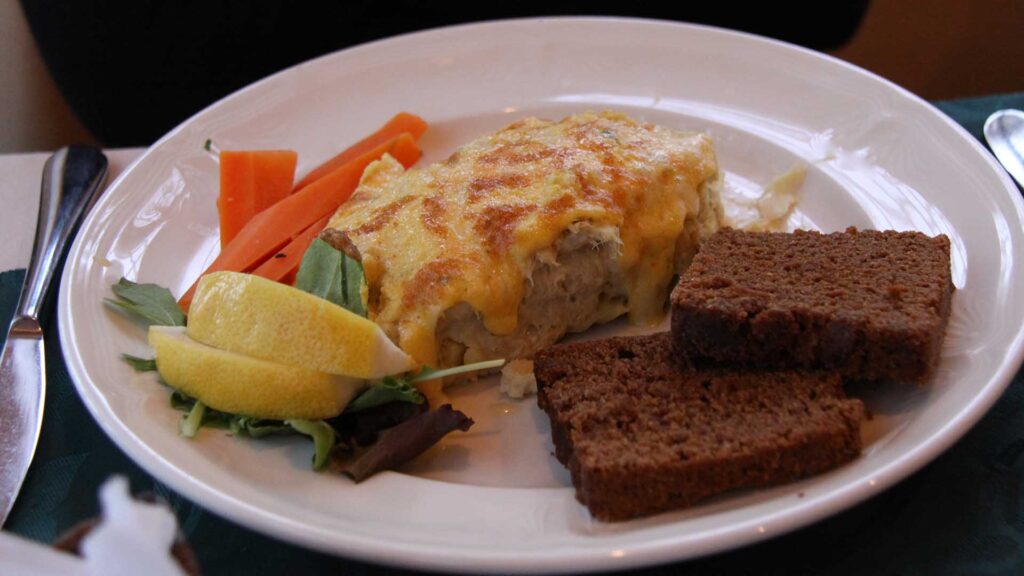
Plokkfiskur is a traditional Icelandic dish made from fish, potatoes, onion, and bechamel sauce. The result is thick, creamy comfort food popular with locals and tourists. Even if it is often called a fish stew, it isn’t really a stew. It is generally eaten with Icelandic rye bread (rúgbrauð) or on its own. In the great scheme of things, this is maybe not Iceland’s strangest food but we still thought it should be on this list.
Café Loki is a great place to try this. We recommend you check out our Reykjavik Food Lovers Tour to taste many of the things on this list.
Prins Póló – Chocolate Bar
This one isn’t even Icelandic, but for some reason, this chocolate got extremely popular here. As it is chocolate and not Icelandic but still extremely popular, we thought it should be on Iceland’s strangest food list.
The candy brand was introduced in 1955 by the company Olza in Cieszyn in southern Poland. It quickly became popular among the locals and became an early export product to the neighboring countries, where it has had a good market share to this day.
In the same year that the product came on the market, Icelanders and Poles made a trade agreement, where the Poles bought fish products. However, it was necessary to find Polish consumer products that the Icelanders liked. Ásbjörn Ólafsson’s wholesaler secured the mandate for Prins Póló, and the strict import rules for foreign sweets at the time were circumvented by defining the product as a biscuit. At its peak, Icelanders ate an average of one kilogram of Prince Póló per person annually. In 2014 the number stood at half a kilogram.
In Halldór Laxness’ book Under the Glacier, he mockingly describes Prince Póló as pumice covered in chocolate. An Icelandic musician also called himself Prins Póló, and a song was released in the 1980s called Prins Póló, about a boy who overate the chocolate.
Rúgbrauð – Icelandic rye bread
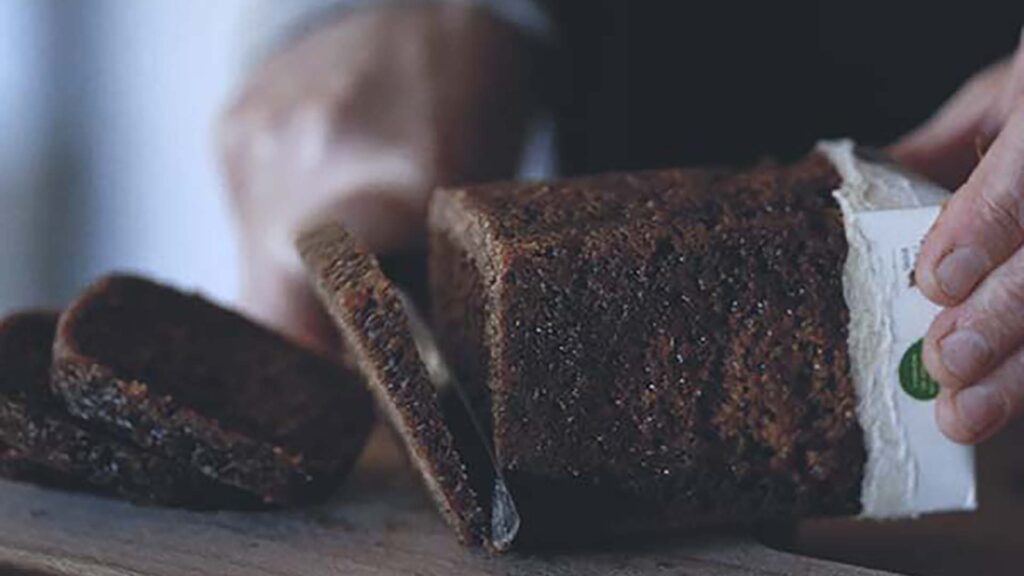
The Icelandic Rye bread is sometimes called pottbrauð or pot bread. And as the name suggests, it is baked in a pot. Before cookers, it took great skill to keep the fire or embers warm so the bread would be evenly baked. No sourdough was used for the bread, but they were often wetted with whey or lactic acid instead of water.
Rye bread is reasonably sweet bread and dark brown. In some places in Iceland, it is cooked by digging a hole into the ground (where there’s geothermal heat). The container is buried there until the bread is ready. You can also bake it in an oven; the hot spring is optional! That is what makes it great; it is so easy to bake. Everyone can do it!
Not Iceland’s strangest food, but it is pretty special to bake it in the ground!
If you don’t have time to bake it yourself, don’t worry. It is available in all stores around the country. Again, Café Loki is a great place to taste it.
Brennivín – Icelandic aquavit

Brennivin, better known as “Black Death,” is the Icelandic’s distinctive spirit. It was created from the “aquavits” introduced by Danish merchants in Iceland in the 17th century.
The exact translation for Brennivin is “Burnt Wine.” This refers to how the “aquavit” is produced: distilled over an opened flame. Completely different from the production of wine and beer through fermentation and without applying heat. And voila! Mixing the “aquavits” with some specific herbs and distilling the “aquavit” in a particular way is how Brennivin was born. The original Icelandic Schnapps.
Brennivin “aquavit” has an alcohol percentage of 37.5%; therefore, the consumption should be moderate, especially if you do shots.
You will find Brennivín in the Duty-Free shop at Keflavík Airport and all Icelandic liquor stores. You can also taste it on our Reykjavik Food Lovers Tour or the Reykjavik Beer & Booze Tour.
Blóðmör – Blood pudding
British people might recognize this; their black pudding is similar to our blood pudding.
This blood pudding is made from lamb’s blood and suet kneaded with rye flour and oats. The blóðmör with lifrarpylsa is colloquially called “slátur” or “slaughter.”
Traditionally, blóðmör was made by cutting the lamb’s stomach and making a bag filled with suet, rye, oats, and blood. These days people often use bags with synthetic materials.
Blóðmör is known from the settlement, and a version of it is known in many countries, but pig’s blood is usually used instead of lambs. Occasionally, spices and raisins are added to the blóðmör, called raisin blood suet. If it is served hot, mashed turnips are usually served with it.
Laufabrauð – Snowflake Bread
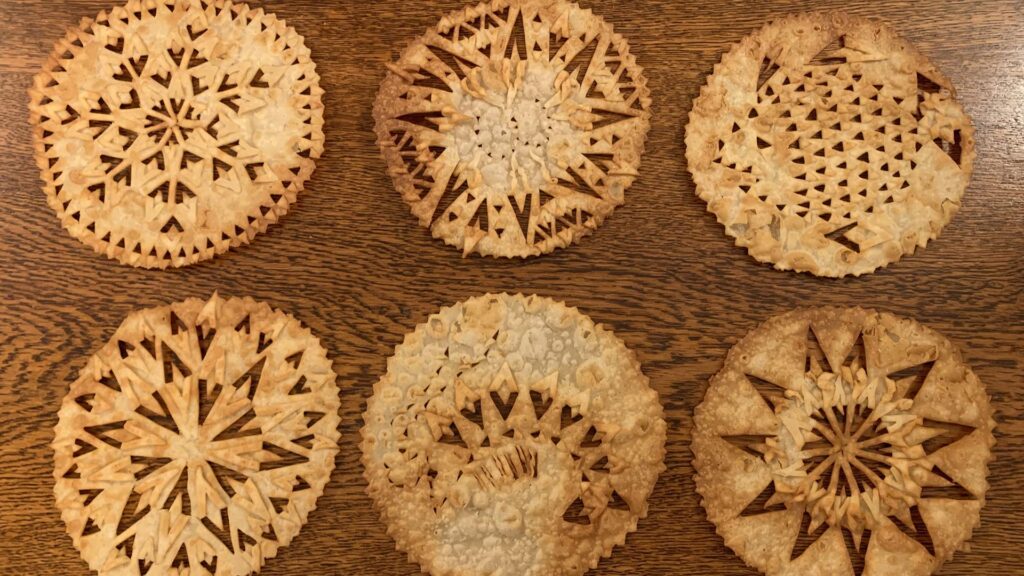
Laufabrauð is also sometimes called snowflake bread in English. This bread is most often eaten around Christmas but also at þorri. Laufabrauð originated in north Iceland. The first written source of laufabrauð is the oldest known Icelandic recipe book from the late 18th century. It was likely written for wealthy people since the recipe calls for wheat flour, cream, and butter – three things most Icelanders had no access to. Rye flour or barley was likely used instead of wheat flour and fat instead of butter.
Hvalkjöt – Whale meat
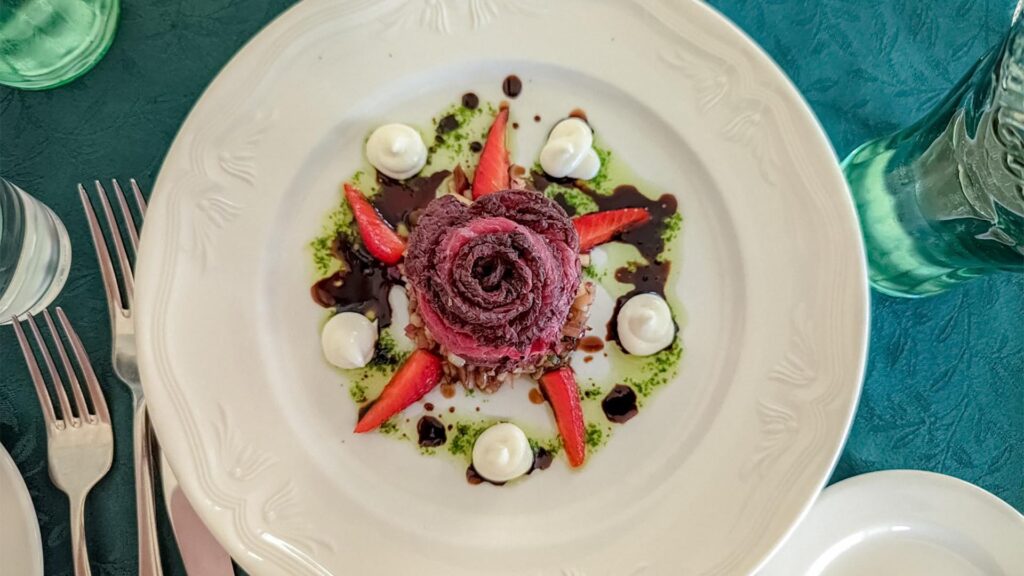
Yes, Icelanders eat whale meat. However, 95% of all whale products from Iceland are exported. Icelanders hunt two species of whale: finback and minke.
Nearly all finback whales are exported to Japan, while minke whale is exported to Norway and Japan. Minke whale stakes are considered a delicacy and are sometimes eaten as part of sushi or tartar. It can be tricky to cook, however, because if you don’t do it correctly, it will taste like fish oil. The restaurant 3 Frakkar on Baldursgata is the best place in town to taste whale meat.
Whale blubber, especially blubber cured with lactic acid, is eaten during the mid-winter festival þorrablót. It is not always available, though, depending on how much of the whale is exported and hunted.
Are there any strange foods that aren’t on the list? Let us know!
Please signup HERE for our newsletter for more fun facts and information about Iceland!




